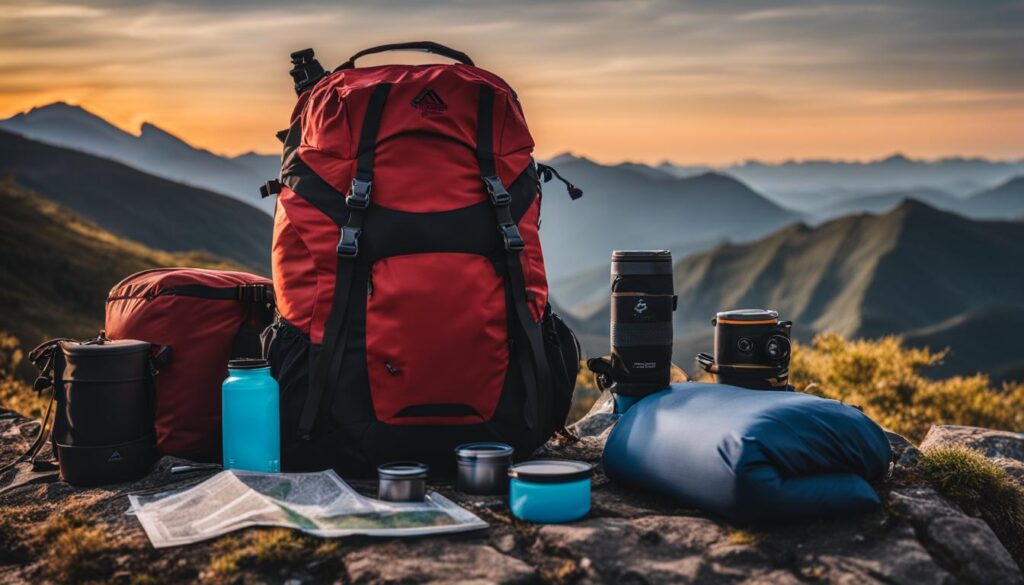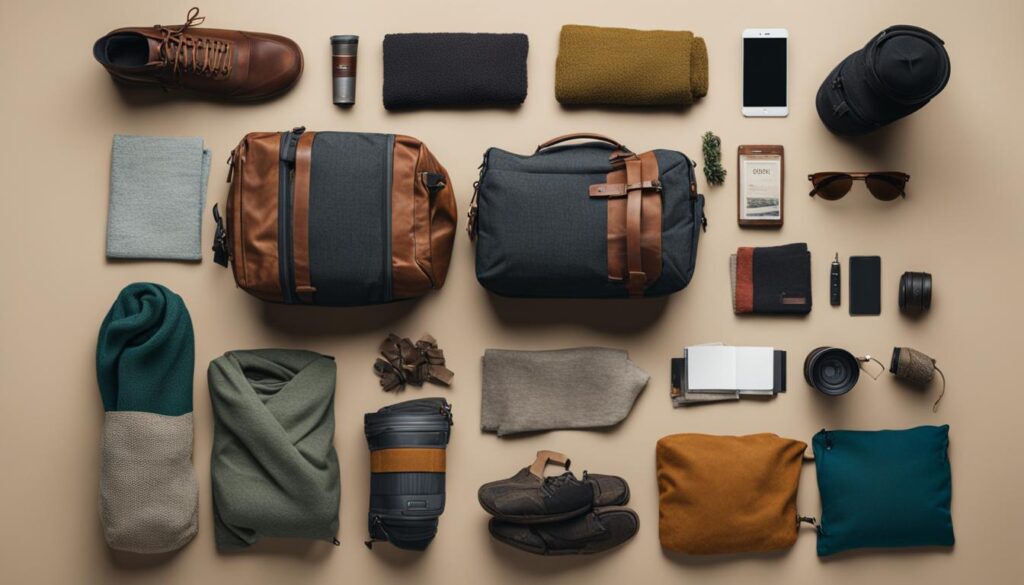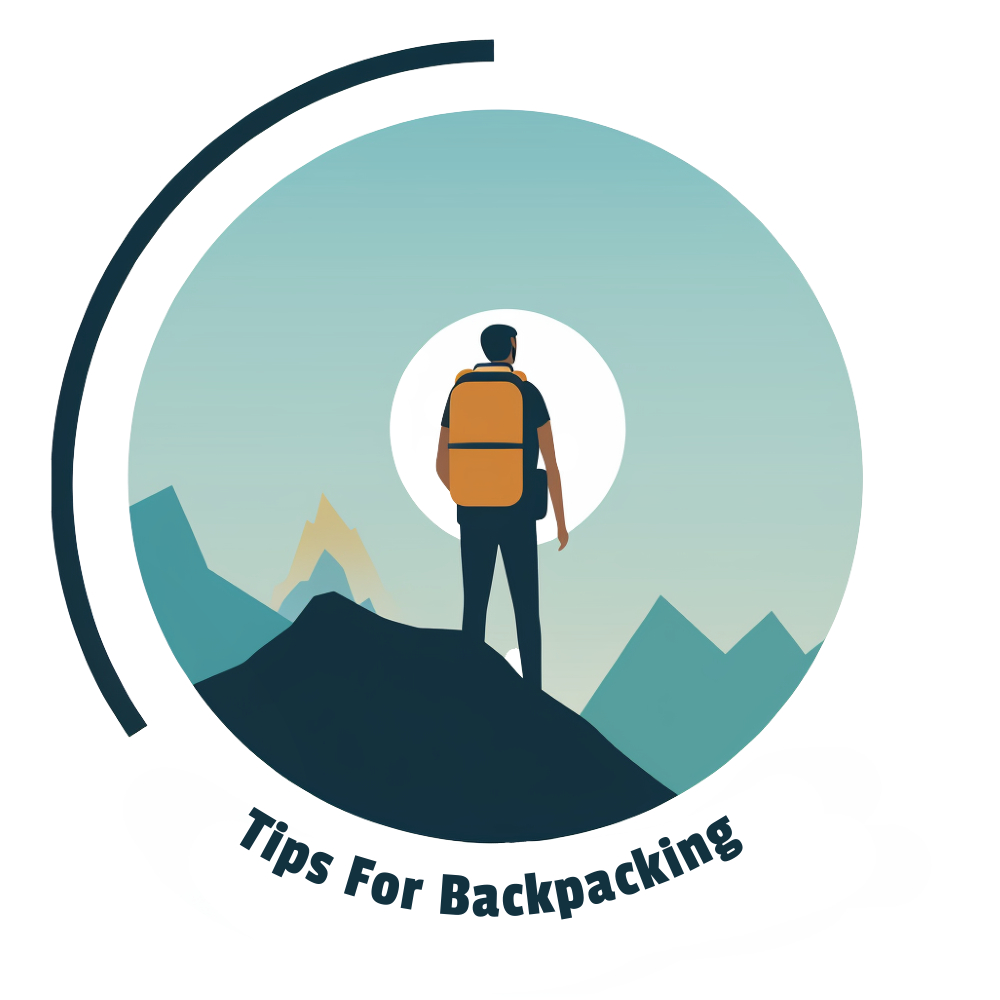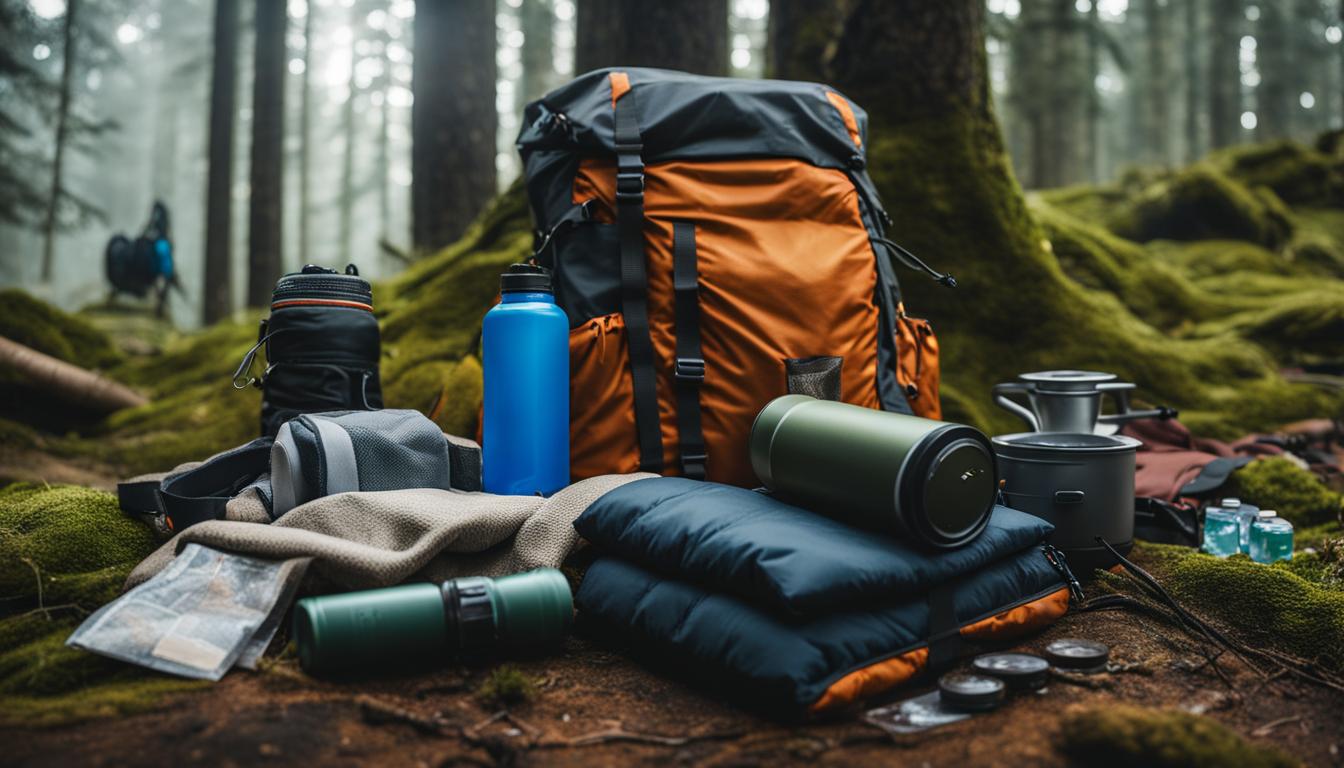When it comes to backpacking, packing light is key for a comfortable and efficient journey. By selecting the lightest-weight versions of essential items and organizing your gear effectively, you can reduce the weight of your backpack without sacrificing what you need. In this section, I’ll provide you with a comprehensive list of backpacking essentials and share tips on how to pack efficiently for your adventure.
Key Takeaways:
- Choose lightweight versions of backpacking gear to minimize weight.
- Opt for multipurpose items that can serve multiple functions.
- Share common items with travel partners to reduce individual pack weights.
- Consider dehydrated food options and consume the heaviest food first.
- Invest in wind shirts and down-filled clothing for lighter clothing systems.
Choosing the Right Gear

When it comes to packing light for your backpacking trip, selecting the right gear is essential. By opting for lightweight travel gear and utilizing efficient packing techniques, you can significantly reduce the weight of your backpack while still having everything you need for your adventure.
Lightweight Travel Gear
Investing in lightweight versions of essential items can make a world of difference when it comes to reducing the overall weight of your backpack. Look for backpacks made from lightweight materials and with a streamlined design. A lighter sleeping bag can also help save precious pounds. Additionally, consider lightweight cooking systems that are compact and efficient.
Travel Organization Tips
Efficient packing starts with proper organization. Consider using packing cubes or compression bags to maximize space and keep your gear well-organized. Utilize pockets and compartments in your backpack to separate items and make them easily accessible. Packing items in a logical order can also help save space and prevent any unnecessary weight.
Multi-Purpose and Essential Items
One of the best ways to pack light is to choose multi-purpose items that can serve multiple functions. For example, a lightweight sarong can double as a towel, a blanket, or even a beach cover-up. Similarly, a versatile headlamp can provide both lighting and a hands-free option for navigating in the dark. Think carefully about each item you pack and consider whether it is truly essential for your trip.
Remember, the key to choosing the right gear is to prioritize lightweight options without sacrificing comfort and durability. By selecting the right gear and employing efficient packing techniques, you’ll be well on your way to a lighter and more enjoyable backpacking experience.
| Item | Weight (lbs) |
|---|---|
| Ultralight Backpack | 1.5 |
| Compact Sleeping Bag | 1.2 |
| Lightweight Cookset | 0.7 |
| Multi-Purpose Sarong | 0.5 |
| Versatile Headlamp | 0.3 |
Tips for Lightening Your Load

When it comes to backpacking, every ounce counts. By employing clever strategies to lighten your load, you can make your journey more enjoyable and less physically taxing. Here are some space-saving packing tips and a handy packing checklist to help you pack efficiently for your next adventure.
Replace Heavy Items
One of the most effective ways to reduce the weight of your backpack is to analyze your gear and replace heavy items with lighter alternatives. Look for lightweight versions of essentials such as your backpack, sleeping bag, and tent. Consider investing in ultralight cooking systems and compact camping gear. By choosing lighter gear, you can significantly lighten your load without sacrificing functionality or comfort.
Share Common Items
If you’re traveling with friends or family, sharing common items can help distribute the weight evenly among your group. Coordinate with your travel partners to determine who will bring items such as a camping stove, water filter, or first aid kit. This way, you can avoid unnecessary duplication and reduce the overall weight of individual packs, allowing everyone to carry less while still being adequately prepared.
Layer Clothing and Choose Versatile Pieces
Packing smart when it comes to clothing can also save you a significant amount of weight. Check the weather forecast for your destination and pack accordingly. Choose lightweight, quick-drying fabrics that can be layered for warmth, rather than carrying bulky items. Invest in wind shirts or jackets, which are lightweight yet effective in protecting against the elements. Opt for clothes with down fill insulation, as they provide excellent warmth-to-weight ratio. By packing versatile pieces that can be mixed and matched, you can minimize the number of items you carry while maximizing your outfit options.
Dehydrated Food and Survival Skills
Food can quickly add up in weight, especially if you’re carrying heavy canned goods or bulky packaging. Consider packing dehydrated meals and snacks, which are lightweight and take up less space. These can be rehydrated with water when it’s time to eat. Additionally, honing your survival skills can help you minimize the need for certain equipment or supplies. Learning how to start a fire, build a shelter, and identify edible plants can allow you to reduce the weight of your pack by eliminating items that serve the same purpose.
With these space-saving packing tips and the help of our comprehensive packing checklist, you’re well on your way to enjoying a lighter and more enjoyable backpacking experience. Remember to pack only what you truly need, prioritize lightweight gear, and make use of versatile items. Happy trails!
Packing Checklist
| Essentials | Clothing | Shelter | Cooking | Hydration | Personal Care | Navigation | Emergency | Other |
|---|---|---|---|---|---|---|---|---|
| Sleeping bag | Hiking pants | Tent | Camping stove | Water bottles | Toothbrush and toothpaste | Map and compass | First aid kit | Camera |
| Backpack | Hiking shirt | Sleeping pad | Cooking utensils | Water filter | Soap and hand sanitizer | GPS device | Emergency shelter | Headlamp |
| Tent footprint/tarp | Hiking socks | Stakes and guylines | Camp fuel | Water purification tablets | Towel | Whistle | Fire starter | Sunscreen |
| Sleeping bag liner | Base layer | Repair kit | Pot and pan | Water bladder | Wet wipes | Knife or multi-tool | Duct tape | Bug spray |
| Headlamp | Insulating layer | Headlamp | Eating utensils | Water treatment drops | Toilet paper | Cell phone | Signal mirror | Portable charger |
Disclaimer: The packing checklist provided above serves as a general guideline. Remember to adapt it according to your specific needs and destination. Additionally, always prioritize safety and adhere to Leave No Trace principles when backpacking.
Are the Essentials for Lightweight Backpacking the Same as Regular Backpacking?
When it comes to lightweight backpacking gear essentials, they are not the same as regular backpacking. Lightweight backpacking requires specialized equipment and clothing to minimize weight, such as ultralight tents, sleeping bags, and backpacks. Every ounce counts when it comes to lightweight backpacking gear essentials.
Conclusion: Pack Light, Enjoy the Journey
After exploring the key elements of backpacking essentials and efficient packing techniques, it’s time to summarize the strategies that will help you pack light and fully enjoy your journey. By following these travel packing tips, you can ensure a comfortable and hassle-free experience on the trails.
Firstly, prioritize backpacking essentials. Opt for lightweight versions of gear such as backpacks, sleeping bags, and cooking systems. Remember, quality is important too, so choose items that are durable and reliable. Additionally, consider multipurpose gear to minimize the number of items you carry.
Secondly, employ efficient packing techniques. Utilize space-saving strategies like rolling your clothes or using packing cubes to maximize the capacity of your backpack. Pack according to the weather and layer your clothing for versatility. By doing so, you can adapt to different climates without carrying excess weight.
Lastly, adopt a minimalist mindset. Pack only what you truly need and avoid unnecessary items. Analyze your gear and replace heavy items with lighter alternatives. Sharing common items with your travel partners can also help reduce individual pack weights. By minimizing your load, you’ll enjoy a more comfortable and enjoyable backpacking experience.

